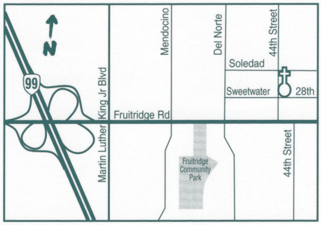
- This event has passed.
Chesterton Society Meeting – All are welcome!
November 17, 2015 @ 6:30 pm - 9:00 pm
The book we are discussing is: Heretics Please read the Chapters 17 and 18.
Click here for Chapters 17: On the Wit of Whistler
Click here for Chapter 18: The Fallacy of the Young Nation
Click here for the Father Brown story: The Vanishing of Vaudrey.
The Complete Father Brown stories can be found here: Father Brown Stories
From sac.chesterton@gmail.com email message:
November and December will be our last months of reading Heretics. Starting in January we will be reading and discussing The Everlasting Man. So plan ahead, if you need to, and ask for a copy of The Everlasting Man for Christmas if you don’t have one already. The Everlasting Man has 14 chapters, a substantial introduction and conclusion. So, conceivably, we could spend as many as 16 months reading and discussing this book. I think one chapter a month is all we want to attempt. The chapters are similar to the length of a chapter of Orthodoxy, which we read and discussed a chapter at a time. That worked out well with Orthodoxy, and I think it will work well with The Everlasting Man, also.
I hope you were able to attend the festivities with Dale Ahlquist and Chuck Chalberg. I’ve received nothing but positive feedback, and a lot of that! It made for quite a busy weekend, but it was one I won’t soon forget! We’ll have to think about doing something similar again someday.
I have been appreciating the genius of Fr. Brown more and more. It helps to remember GKC is writing these stories not too long after A. Conan Doyle wrote the Sherlock Holmes stories. The Holmes stories are a joy to read. Doyle was a real pioneer of the genre, the characters and stories are unique – their place in the canon of english literature is secure. Sherlock Holmes focuses on clues and evidence – his mysteries are a puzzle that is figured out when the pieces are complete and assembled in the right configuration. Fr. Brown’s method was unique at the time and his mysteries were truly ground breaking. He added a whole new layer to the crime/mystery story that was richly developed by later writers such as Agatha Christie and Dorothy Sayers.
I hope to see you on the 17th of November.
Yours,
Spencer
Father Brown snapped his fingers with the same animated annoyance. “That’s it,” he cried; “that’s just where we part company. Science is a grand thing when you can get it; in its real sense one of the grandest words in the world. But what do these men mean, nine times out of ten, when they use it nowadays? When they say detection is a science? When they say criminology is a science? They mean getting outside a man and studying him as if he were a gigantic insect: in what they would call a dry impartial light, in what I should call a dead and dehumanized light. They mean getting a long way off him, as if he were a distant prehistoric monster; staring at the shape of his ‘criminal skull’ as if it were a sort of eerie growth, like the horn on a rhinoceros’s nose. When the scientist talks about a type, he never means himself, but always his neighbour; probably his poorer neighbour. I don’t deny the dry light may sometimes do good; though in one sense it’s the very reverse of science. So far from being knowledge, it’s actually suppression of what we know. It’s treating a friend as a stranger, and pretending that something familiar is really remote and mysterious. It’s like saying that a man has a proboscis between the eyes, or that he falls down in a fit of insensibility once every twenty-four hours. Well, what you call ‘the secret’ is exactly the opposite. I don’t try to get outside the man. I try to get inside the murderer . . . . Indeed it’s much more than that, don’t you see? I am inside a man. I am always inside a man, moving his arms and legs; but I wait till I know I am inside a murderer, thinking his thoughts, wrestling with his passions; till I have bent myself into the posture of his hunched and peering hatred; till I see the world with his bloodshot and squinting eyes, looking between the blinkers of his half-witted concentration; looking up the short and sharp perspective of a straight road to a pool of blood. Till I am really a murderer.”
“Oh,” said Mr. Chace, regarding him with a long, grim face, and added: “And that is what you call a religious exercise.”
“Yes,” said Father Brown; “that is what I call a religious exercise.”
–The Secret of Father Brown


 5461 44th Street
5461 44th Street
